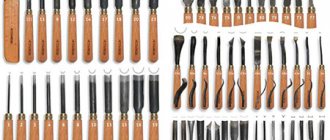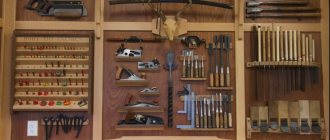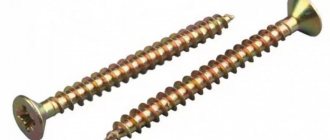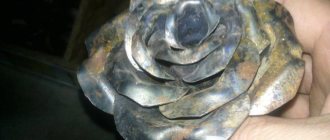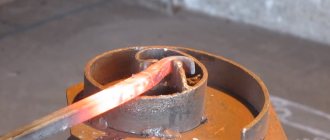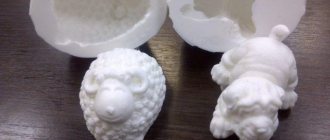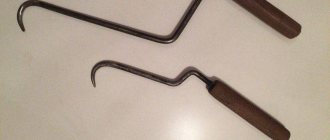Drawing paper Lily Holding “Rybachka”, for watercolor, folder, A3, 20 sheets
284 ₽ More details
Optimum belt bag
990 ₽ More details
Reinforcing mesh
Plexiglas for edge lighting is a beautiful and practical solution for a home, apartment, or office. Light spreads and refracts evenly through the canvas. Thus, a cozy atmosphere is created in the room. The drawing on the wall looks organic, not only performing a decorative function, but also illuminating the space at any time of the day.
Features of false windows
The design of end lighting in combination with a false window is popular today. Framelight is a panel where a poster with an illustration is placed. Any landscape, photo or painting takes on a new look. In addition to its decorative function, the unique panel creates additional lighting.
The design is delivered ready-made; the user needs to insert a poster with an image. Often, an imitation of the view from a window, different landscapes, or photos are used as a picture.
The poster can be easily replaced at any time. A summer street can easily be replaced by an autumn park or a winter forest. Framelights are easy to use, as they are equipped with a click profile. Due to this, the upper part snaps off and the protective module is removed. A variant with a “Magnetic” design is also used. His system uses magnets to secure the canvas.
Using a false window, you can imitate any view from the window that you want
How to make false windows using ready-made framelight profiles
Let's consider one of the options for an interior solution: acrylic end lighting when creating a false window. Sometimes in rooms without windows or where there are not enough of them, designers practice creating false windows. If previously photo wallpapers were used for these purposes, now ready-made light boxes - framelights - can be used as an imitation. They are supplied fully equipped, all that remains is to supply a poster with a suitable image. This can be an imitation of the view from a window with a drawn window profile or a landscape you like. For complete realism, the framelight can be supplemented with an overhead imitation of window sashes.
The ability to replace the poster without much difficulty allows you to change the “outside” picture from time to time. For example, change the view of a summer street to an autumn landscape. This is achieved by the fact that framelights are equipped with a click profile. It allows you to snap off the top panel of the profile and easily remove the protective module. There is another option: acrylic edge lighting, “Magnetic” profile. The peculiarity of this profile is that the upper part is attached to the lower part using a system of magnets.
DIY LED lighting assembly
Before assembling the lighting device, you need to check the LEDs for functionality and measure the mains voltage.
It is also important to understand that if individual elements of the circuit are connected incorrectly, an explosion may occur. Typically, incorrect assembly of a device consists of poor-quality soldering of components
When measuring the current voltage drop of an LED source, it is recommended to use a special measuring device - a multimeter. Most often, for such homemade designs, the voltage is 12 V.
In our case, the LED design is designed for 220 V AC.
Description of LED lamps
22.03.
2018
With a significant increase in the price of electrical energy, consumers are increasingly thinking about replacing standard lighting sources with LED ones, which help to significantly reduce electricity costs.
But not everyone can yet afford to purchase quite expensive lamps made with LEDs. As a result, craftsmen learned to make such lamps on their own at home.
What are illuminators with LED elements?
LEDs are electronic semiconductor devices that emit light after electric current passes through them.
Such lighting devices appeared on the lighting equipment market about 15 years ago and immediately gained enormous popularity. But they were not available to everyone, as they were very expensive.
Today the price of such lighting equipment is also quite high, but already several times less.
Today, such lighting devices are presented on the market in a wide range. Different models differ in size, shape, power, purpose, design, and color shades.
You can separately purchase components for making lighting equipment yourself at home.
If you follow the step-by-step instructions for making an LED lamp for your home, you don’t have to be an experienced radio amateur to make it.
For your information! The simplest devices can operate on a voltage of only 3-5 V (the power of a standard battery). Of course, such a lamp is only suitable for use as a flashlight or for illuminating, for example, house flowers. How to make a more serious LED lighting system?
Design features, operating principle of LED equipment
Before you start inventing an LED lighting device yourself, it is recommended to understand its design and operating principle.
- A diode is a semiconductor element that passes electric current through itself in one direction. In the process of electron recombination, energy is generated and photons are emitted, resulting in the release of light and heat.
In an LED device, the removal of thermal energy is the main nuance that you need to pay attention to when assembling the lamp yourself, since elevated temperatures can cause premature failure of the home-made structure. Therefore, a mandatory element of the design of such a lighting device is a cooling radiator.
The simplest design of a radiator is a substrate made of aluminum, on which LED elements are placed directly.
But this is not enough for complete heat dissipation in equipment with more than three semiconductors. For such lighting devices, specialized steel radiator structures are provided.
In household devices, this is the chandelier body itself.
The ice product is equipped not only with a radiator. Its design also includes a diffuser and a light flux reflector, which could well be a lens and a reflector. LED elements are most often produced in a ready-made assembly.
Important! To prevent the illuminator from irritating the organs of vision with sufficiently bright light emission, it is recommended to additionally cover the body of the product with a frosted bulb.
DIY LED lighting assembly
Before assembling the lighting device, you need to check the LEDs for functionality and measure the mains voltage.
Recommendations! To protect against electric shock when setting up and operating such equipment, it is recommended to use a 220/220 V isolation transformer.
It is also important to understand that if individual elements of the circuit are connected incorrectly, an explosion may occur. Typically, incorrect assembly of a device consists of poor-quality soldering of components.
When measuring the current voltage drop of an LED source, it is recommended to use a special measuring device - a multimeter. Most often, for such homemade designs, the voltage is 12 V.
In our case, the LED design is designed for 220 V AC.
For your information! High light output from diodes is achieved at a current of 20-25 mA. Cheap elements will emit an unpleasant bluish light flux, which will negatively affect the organs of vision. It is recommended to additionally use red LEDs (for example, 10 white 4 red).
LED lamp assembly diagram
The scheme is quite simple. It was designed to power LED elements directly from mains voltage, without the use of an additional power source.
Important! The disadvantage of such a circuit is that all components included in it are not isolated from the network; accordingly, the illuminator has no protection against electric shock. Therefore, you must be extremely careful when assembling the equipment. But later it will be possible to isolate.
Accessories for assembling the device
- To protect the electrical circuit from voltage surges, a resistor (resistance 100 Ohms) is used. If this is not available, then it is recommended to use a modern diode rectifier bridge.
- To limit the electric current required for the normal functioning of the LED elements, a 400 nF capacitor is designed.
If necessary, you can add more diodes. The total current consumption should not exceed the limits set by the capacitor. It is important to make sure that the capacitor used for the electrical circuit is designed for a voltage of 350 V (this parameter must exceed the mains voltage by 1.5 times). - To ensure a stable glow without flickering of the light flux, a 10 µF capacitor is used.
The voltage of this element must be greater than the voltage of the LEDs connected in series in the circuit during operation.
Step-by-step instructions for assembling a base for an LED light
- We carefully disassemble the lamp or floor lamp so as not to damage the base.
We clean it and degrease the surface using an alcohol-containing solution. Particular attention should be paid to cleaning the hole (excess solder is removed and degreased). These procedures are mandatory for further high-quality soldering of the base elements. - We insert a resistor (100 Ohm) and two capacitors (each 220 nF, 400 V) into the base.
- Using a regular soldering iron, we solder a tiny rectifier and a diode bridge, which was prepared in advance.
We process all surfaces, but carefully so as not to damage the already installed components. - We insulate the structure.
For these purposes, mounting adhesive from a gun or a polyvinyl chloride tube are suitable. But it is recommended to use a special insulating agent that will fill all the empty space between the components, while better fixing them in place.
The base for the future lighting fixture is ready!
After these manipulations, you can proceed directly to assembling the lamp itself using energy-saving LEDs.
Installation instructions for LED elements
- For the base we take a circuit board, which can be purchased at any radio-electronic goods store. You can disassemble some old electrical device that is unsuitable for use (in this case, the board needs to be cleaned of unnecessary elements).
- Important! We first check each board for functionality so that our work is not done in vain. Particular attention should be paid to the LED contacts; if necessary, we clean them additionally and then narrow them.
- Next, we assemble the constructor: we solder four pre-prepared boards to the capacitor, and insulate the entire structure with a special means. We check the quality of the connection between individual diodes.
- The boards must be located at the same distance from each other.
This is necessary for uniform distribution of lighting during operation of the lighting device. - We solder a 10 uF capacitor without additional wires, a 100 Ohm resistor (to any board). We insulate all contacts.
- The product is ready! We check the functionality.
Recommendations! LED elements emit a fairly bright luminous flux, so we recommend covering your homemade lamp with some kind of decorative lampshade.
The most dangerous color and its effect on the eyes
Why is the spectrum of radiation from an LED light bulb so dangerous? If we break it down into its components, it is easy to see that at a wavelength of 480 nm there is a very large dip.
The left side of the hole is characterized by a blue LED, the right side is characterized by a yellow phosphor, with which the LED itself is coated.
No such dips are observed in natural sunlight.
Why is this “pit” dangerous? It has been experimentally established that light with a wavelength of 480 nm, falling on ganglion cells, is directly responsible for the speed of the reaction to reduce the diameter of the pupil, that is, its closure.
Thus, due to the failure of the LED lamp in this range, our pupil remains more open, letting in the rest of the radiation spectrum.
As a result, instead of focusing, a feeling of some blurriness appears. Next, the eye muscles are loaded and focus is restored.
Such constant strain on the eyes is the first sign of myopia.
In addition to the failure, the blue peak also has a bad effect. Due to it, retinal is synthesized in the eyeball - the chemical basis of vision, with the help of which the retina of the eye converts light into metabolic energy.
However, with excessive accumulation (the peak contributes to this), everything can lead to partial death of retinal cells.
Also, excess retinal provokes deformation of the eyeball and contributes to the development of myopia.
That is why all manufacturers long ago sought to develop an LED light bulb with a spectrum very close to that of the sun (without dips and peaks). And I must admit, they have made some progress in this matter.
Even its inventor Shuji Nakamura abandoned the outdated “blue crystal – yellow phosphor” technology. His recommendation is to switch to sources with biologically adequate light spectra as quickly as possible.
It’s nice to know that not so long ago mass production of such “solar” light bulbs under the Remez brand began in our country.
LEDs without diffusers are especially dangerous. Experiments were conducted that showed that fatigue and performance under such lamps were reduced by almost half compared to “naked” fluorescent lamps.
And they, in turn, are far from a gift. The diffuser increased efficiency in relation to luminescent ones by only 12%.
That is, you understand how important it is to have an analogue of the solar spectrum at home and at work
However, not everyone shares the opinion about the dangers of blue LED light. The main argument in the dispute is the low energy of photons.
Even if the pupil is narrowed less than expected, the energy of the light flux from the blue LED is supposedly insufficient to cause significant harm to the eye. Unless, of course, you put a 1kW lamp in front of you.
However, do not forget that the cumulative effect of prolonged exposure to such light has not been canceled either.
Secrets of installing glass walls
Now I will tell you a few secrets that will certainly help you in installing glass walls, will save your finances and will not lead to injuries. I'll tell you about the tools you will need to complete this task.
The first secret I will tell you is that the glass should not be monolithic, even if you are making a wall the size of which allows you to transport it entirely. Why is that? You see, during installation you will, one way or another, encounter a problem of high dimensions, which will no longer be solved. You will have to ask for more help and spend more effort. In addition to all this, the structure, consisting of several parts, is easier to replace with a new one if it breaks. What I mean? If someone breaks part of the wall, it will only be part of it, and not a monolithic piece of huge size. Yes, you can install the missing part after a breakdown, but do not forget that plexiglass is not so easy to break off, but it is very easy to make a full-length crack.
When performing the work you will not need many tools. All you need are glass holders and connectors, self-tapping screws, a level, a drill and a screwdriver.
When choosing glass holders, give preference to elements that are a little wider and more powerful. How big it should be, you should understand based on the size of one wall element. The main attention should be paid to the height, since the size up can be much larger. If the ceiling height is more than three meters, the holders must be an order of magnitude stronger than if the desired wall height is up to two meters.
The second step should never be missed. You need to draw a clear, even line along which you will install the lower holders. Why only them? We recommend installing the upper ones so that the glass is clearly perpendicular to the ceiling. The level will help you with this.
Installation should begin from the bottom, and then alternately screwing in the upper holders using self-tapping screws. At the same time, do not forget that it is necessary to install side holders between the glasses, which will prevent the structure from falling apart, as if it were a Lego constructor.
When you install the side frames, pay attention to the fact that you can also install either glass holders or ordinary silicone plugs on the sides. You used approximately the same ones if you installed the lining on the ceiling. You can also, if desired, install a door made of the same material into a glass wall.
Life hack : if no one has ever complained about your hands, and you can make something similar to a small gutter, then we will tell you how you can make the entire structure more stable. In addition to the holders or instead of them, you can use a “U”-shaped structure that you made, which can hold it along its entire length, and not just pointwise. The main thing is to securely fasten it to the sides so that the glass does not fall on the furniture, or, which is much worse, on someone’s head.
After installing the wall, ALWAYS check it for stability and vibrations. Remember, if the glass moves from side to side, then the chances that it will soon shatter are an order of magnitude greater.
Materials for self-assembly of the light panel
DIY acrylic edge lighting can be a fun project if you like to DIY at home. To install the light panel you will need:
- acrylic canvas;
- aluminum profile;
- LED line or strip;
- compact power supply (adapter) for 12V.
LED strip is a flexible printed circuit board on which LEDs are fixed on one side and an adhesive layer is applied on the other for attachment to an aluminum profile. If you intend to install an imitation window in a bathroom or other rooms with high humidity, then you should buy a special moisture-resistant tape. If you are using a false window as a light source, you must purchase a heavy-duty LED strip. You can calculate the power of the adapter using the formula: the power of the block is equal to the power of the LED strip multiplied by its length in meters.
Choose one-sided profile for the light panel
Pay attention to the following characteristics: profile thickness and lighting system. Profiles can be designed for fluorescent lighting or for mounting LED strips
Since the thickness of the panel is important for a false window, LED lighting is considered. For edge lighting, the most important thing is the type and characteristics of the material, so we will consider its choice separately.
Step-by-step instruction
Designing glass for edge lighting is within the capabilities of any homeowner. About the features of the process in order:
- We cut out a light panel of the required size and shape from plexiglass. To do this, we use a hacksaw, jigsaw, etc.
- We process the edges and make a recess at the end for the LED components.
- We apply the design to self-adhesive paper and glue it to the canvas.
- Using a scalpel, cut out the outline.
- Using an electric drill, we engrave the glass along the marked line.
This is interesting: do-it-yourself engraving on plexiglass.
Now you need to assemble the circuit. We take the LEDs and solder them to their positive terminals via a resistor. We insulate the contacts with heat shrink. Using acrylic glue, we attach the LEDs to the end holes of the canvas. To check the serviceability of the system, we connect the pluses and minuses along the wires and attach them to the battery holder.
The result is an excellent night lamp, assembled yourself.
You can make a beautiful lamp from plexiglass if you follow the instructions
Materials and tools
Have you decided to make your own edge lighting? Make sure you have everything you need at hand:
- acrylic canvas;
- aluminum profile;
- LED Strip Light;
- small 12V power supply.
If the panel is to be placed in a room with high humidity, a special tape is needed. Are you considering a false window as an auxiliary light source? Then you will need an LED strip with increased performance.
Tools usually include a hacksaw, electric jigsaw, drill, fastening components, etc.
To operate the plexiglass lamp you will need a 12V power supply.
Acrylic preparation
It is important to ensure uniform illumination of the panel. We will need high quality acrylic. A balanced, rich glow is guaranteed by diffuse components. They appear in acrylic sheets during its special preparation. It is impossible to perform such processing at home, so you need to purchase a ready-made canvas that meets all the parameters. The thickness of the plexiglass is determined taking into account the dimensions of the light panel.
The ends in acrylic fabric must be polished. In the piece where there are no LED components, we apply reflective material. During production, acrylic is covered with a protective film. It prevents damage to the canvas and redistribution of light. Remove the film before installing the structure in the profile.
Profile assembly
Aluminum profile components are at your disposal. We cut them to the required sizes at an angle of 45°. Then we connect the parts using the corners. Three sides are ready, now we install LED components throughout the entire interior. We connect the wires in advance to ensure contact with the power supply. The 12V adapter is capable of providing energy to a tape up to 5 m long. We screw at least 4 fasteners to the top of the profile for further installation on the wall.
Aluminum profiles for false windows must be mounted at an angle of 95°
Working with the light panel
Three sides of the profile are assembled and the LED components are secured, we begin the installation of the light panel. We need a reflector - a sheet that reflects light. Let's add it to your profile. We also add an acrylic sheet, a film with an image, and a protective coating to the design. We install the canvas above the LED components. This promotes good light scattering. At the end we attach the last side of the profile.
An important nuance: the poster must be printed on backlit film - this way good light transmission is achieved. To make the structure more rigid, a backdrop of sufficient thickness is inserted into it.
Wall mounting
The light panel is ready, now you need to secure it. Hooks are mounted to the wall using dowels. All that remains is to hang the false window and connect the power supply.
Using simple technologies, you will be able to create a modern design in any room on your own. Acrylic edge lighting will create a cozy atmosphere and, if necessary, perform a practical function.
Plexiglas: what is it?
But let's start with the basics: let's figure out what this material, plexiglass, is. It is also called acrylic, although it can also be based on polycarbonate or polystyrene. The latter is used for the internal needs of buildings; it is poorly resistant to the destructive effects of ultraviolet radiation and precipitation. However, the material is able to “work” in a wide temperature range: from minus 20 to plus 60 degrees.
As for polycarbonate, it is resistant to ultraviolet radiation, and the range of tolerated temperatures is even higher: from minus 40 to plus 120 degrees. Therefore, the material can be used outside.
Plexiglas is similar in quality to polycarbonate. Its operating temperature limit is from minus 20 to plus 70 degrees. For processing, you will need a sanding block and paper - to remove scratches and make smooth edges. Therefore, plexiglass for lamps is a good option.
Works with plexiglass
The shape of the lamp is cut out of the canvas, and the edges are well processed. Holes for LEDs for end illumination of plexiglass are made in one of the edges. A pattern that will be illuminated is applied to self-adhesive paper and glued to the plexiglass. A strip of the future contour is cut out with a sharp knife. A drill is used to engrave plexiglass along the contour with a groove of the required depth, which regulates the brightness of the pattern.
Assembling the circuit begins with soldering the LEDs to the positive ends along a resistor, and to the terminals - two-core wires, which must be insulated with heat shrink. The LEDs need to be glued into pre-prepared end holes, the plexiglass with fasteners must be assembled into a single structure and the wires must be pulled through. The correct operation of the circuit and connections must be checked. All the positive ends are connected into one, and the negative ends into another core. Observe the correct polarity and connect them to the battery holder. If the connection is functioning, you can solder and insulate the wires and decorate the fasteners and panels.
A little about the material
The named material is a polymer alloy that has high strength and at the same time maximum ductility (subject to the use of high temperatures). The composition of plexiglass includes amorphous polymers, which mainly consist of unfolded and linear macromolecules. This composition of the material allows us to achieve its absolute transparency, strength and lightness.
A new material that significantly expanded the capabilities of builders and designers
The advantages of plexiglass used as a material for creating decorative interior elements are:
Therefore, organic glass is becoming increasingly in demand among jacks of all trades.
It is worth noting that completely different intricate little things can be created from plexiglass. These can be cute bookcases and fancy shelves, small aquariums or pots for indoor plants, semicircular partitions in the room or simple tabletops. In some cases, it may be necessary to bend the plexiglass at a given angle.
You can carry out this task at home, following the basic rules for working with plexiglass.
Cutting wood and acrylic glass to size
For this project I decided to use solid wood. I had a small piece, 20mm thick, in my workshop that is perfect for this purpose. The acrylic I used was 5mm thick and I think it's a perfect combination with the wood. The base of the lamp is 16 by 9 cm. The upper figure, placed vertically on the acrylic base, measures 28 by 14 cm. My experience when cutting acrylic has shown me that when the cross slide moves slowly, the acrylic melts, so you need to move faster to get clean cuts .
Impact on the body
The blue peak around 450 nm from LEDs affects the entire body in addition to the retina. This happens through suppression of melatonin production.
Instead of rest and sleep, on the contrary, we want movement and action.
What is melatonin and why is it needed? This is a hormone that directly affects metabolic processes.
It is produced in the endocrine gland. Suppression of melatonin leads to early cellular aging.
Melatonin is an antioxidant that protects our mitochondria and DNA from damage, an assistant to the immune system, enhancing its function.
However, not everything here is so simple and it’s still not worth blaming the LEDs. As deeper research has shown, the dependence is primarily expressed in color temperature.
The higher it is, the more melatonin synthesis is suppressed. Moreover, this process occurs equally under different lighting sources.
That is, there is not much difference between LEDs and other types of light sources. Any artificial lamps with a temperature of 6000-6500K have an equally bad effect on melatonin production.
How to protect yourself from this?
1
It is better to leave incandescent light bulbs there, or install alternative night lights.
2
Don't sit in front of a computer monitor or smartphone screen.
3 4
What about the decor?
In fact, you can go wild in this regard on an unrealistic scale. On glass walls you can hang paintings by your friends or favorite artists, family photos, or beautifully decorate a glass shelf attached with special screws
Don’t stop your imagination, just pay attention to what kind of load the decorative elements will create on the shelf. If such a wall is a partition between two rooms, then the right decision would be to cover the transparency with curtains
Tip: the entire apartment is not always done in the same color, and some curtains may not match the interior of another room. Use materials of different colors on both sides or even cover the glass on the side of each living space so as not to infringe on the personal space of each of the apartment residents.
Let me first explain why plexiglass
When I began to study this issue, I immediately wondered about the choice of material. Naturally, immediately thinking about plexiglass, I decided to watch a video of how such walls beautifully fly apart if you have pets in the house who like to move very actively.
Plexiglas is an order of magnitude stronger and will withstand a not strong, but accurate hit from a dog or a child’s toy. In addition to this, if something sharp accidentally flies into it, it will not fly into pieces, but will only crack or, at most, the edge will break off. It won't be very pleasant if you accidentally hit a glass wall and it collapses on the floor, catching furniture with shards, scratching the floor and that, not to mention the cuts and wounds that may be on you or those who were nearby.
In addition to all this, you can easily attach to it the decorative elements you need or attributes that will help complement the design of your interior. These can be all kinds of glass attributes, as well as elements made of wood or metal.
What does it represent?
An LED night light is a lamp powered by LEDs. LEDs are capable of converting electrical current into light. And the brightness of the device depends on how powerful the flow is. LEDs gained popularity at the end of the last century and have changed a lot since then. They are used in various areas of life, for example, when installing banners or for designing show programs.
LEDs can be distinguished into several types:
Multicolor - they are based on the optical effect of obtaining many shades by mixing three primary colors. As a rule, this requires mixing red, blue and green, which in different combinations will help to obtain other colors.
Thanks to modern technologies, LEDs can have any color and shape. In addition, they are divided into outdated types and improved models.
“Is there anything to highlight?”
What to make the backlight from? Everything here is elementary simple. The best option that will not harm your financial health and nerve endings during installation is diode strip. It is not very expensive, has different colors or can be placed in boxes of the color range you need. A fairly optimal solution to this problem.
We recommend powering such a lighting element at a nearby switch by providing a separate button for this light option. You can place the lighting either around the entire perimeter or from a certain side. In this matter, everything will be decided only by your desires and imagination, so there is room to roam.
I’m not a big expert on electricity, and when I installed the above-mentioned multi-panel in the office, I delegated the issue of connecting to the network to another person.
Cozy light in every home
Plexiglas is a unique material that distributes and refracts light. This property is used when creating luminous plexiglass with your own hands. An interesting and beautiful idea is based on the placement of an LED lamp at the end of the plexiglass. The rays reflected from the edges spread across the surface of the canvas and create interesting effects. For example, engraving on the surface of glass will form a line that repeats the image.
Illumination of plexiglass with LEDs is a convenient and beautiful interior solution using modern technologies. The diffused stream of light is pleasing to the eyes. In addition, this is a very practical and economical lighting option, since plexiglass lighting has minimal energy consumption. And this method is sometimes the only way to achieve the desired effect.
In the interior, do-it-yourself plexiglass edge lighting is used because of the unusual appearance of such decor, which creates a stream of diffused light. Aesthetics here combines very well with functionality. The picture, glowing from within, looks very impressive. The rays hitting the plexiglass are refracted in the engraving lines and reproduce the contours of the design with a soft glow.
Plexiglas is a type of plexiglass for LED lighting of lightboxes and advertising panels. Colorless particles in its composition scatter the rays going to the end part of the sheet. At maximum power, uniform illumination of the surface is created without distortion or darkening.
Manufacturers of plexiglass also produce acrylic sheets that are capable of excellent scattering of light rays directed from the ends of the canvas. Uniform dispersion over the surface of the sheet is ensured thanks to special reflective microparticles. As a result, they function as multiple light sources.
Places of application
LEDs illuminate structures for various purposes, for example:
- shelves,
- ceiling panels,
- false windows,
- stair railings,
- kitchen aprons, etc.
In cinema halls and apartments it is convenient to use framelight - a light panel where you can insert posters with any images that can be very easily replaced. A winter forest instantly turns into a summer street or easily gives way to an autumn park. Framelights are very convenient to use because they are equipped with a click profile.
To achieve good light transmission, the poster must be printed on backlit film. One thick backing that is inserted into it will help make the structure more rigid.
Items needed to make an edge light
First you need to develop a sketch of the picture and prepare tools and materials. You will need:
- plexiglass,
- wooden blocks for wall mounting, nails, bolts and nuts,
- LEDs, compartment for three miniature batteries, resistors, electrical wires and heat shrink tubing,
- glue, paint, self-adhesive paper,
- pencil, ruler, sharp knife,
- soldering iron, drill and wire cutters.
The video explains how to make plexiglass backlit with ledexlight LEDs:
see also
Comments 24
For a couple of years, Nazal made a frame for his number with LED backlighting. Plexiglas 10mm thick was milled on a program-controlled machine. You can look here: www.drive2.ru/users/tredv…/288230376151852436/#post
this car is a drive, look for the BZ trees and sticks
As far as I remember, it’s plexiglass, and there’s a logo stuck on the back side
the man said that he just ordered from an advertising agency
I read this post when it appeared) I forgot
Interesting topic! Post the end result later.
The image is applied by laser engraving and illuminated from the end of the plexiglass. The minimum thickness of plexiglass for the manufacture of such light displays is 1.5 mm. Any advertising agency that works with outdoor advertising does such things. The main thing is to direct the light straight to the end and not let it go to the sides. To do this, in advertising signs the light element was closed in a special box into which engraved plexiglass was inserted. The ends that are not illuminated must be sealed with a mirror film. Why is it better to engrave with a laser and not with a cutter: laser, engraving. melts the surface, after the cutter it is necessary to polish the milled surface, as it becomes dull and does not transmit light well
Thank you very much for the detailed answer! Now I understand that I can’t do it on my own)
Yes, it’s easier to order for money and be sure of the result
thanks for the advice_) now I’m thinking about what’s better on the door, such an inscription or strakes...
Thank you very much for the detailed answer! Now I understand that I can’t do it on my own)
Oh thank you) now let's evaluate the link
You can treat glass with a pisco blaster!
you take plexiglass and engrave, but not through it and then highlight it on the side)
take plexiglass, scratch out the inscription and illuminate it from the sides with LEDs) it seems like that, as far as I know)
is it scratched or cut out?) and the sides - just from the side of the panel?
Well, you can say it’s engraved))) so that it’s of better quality, otherwise you’ll sit there scribbling with a knife
